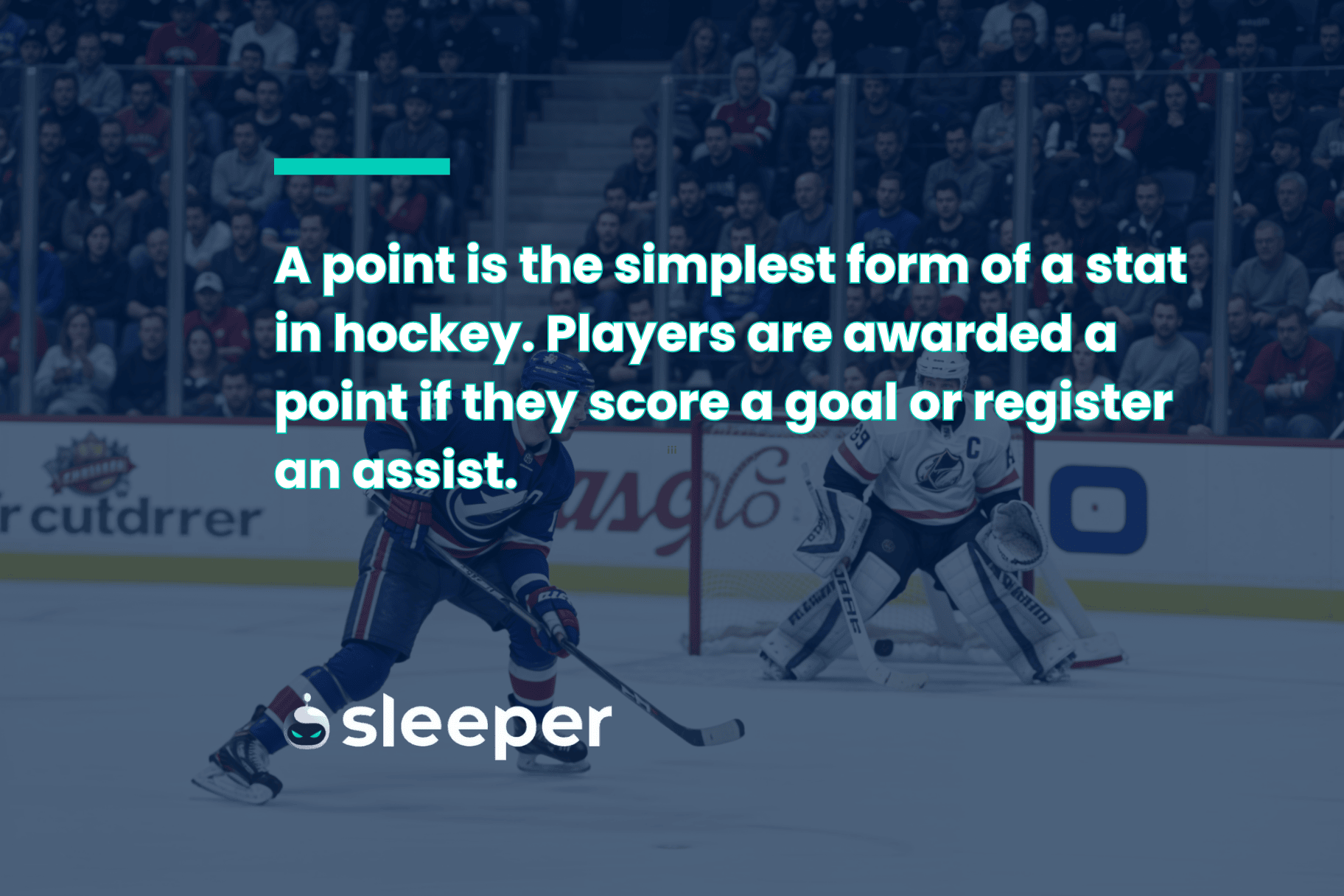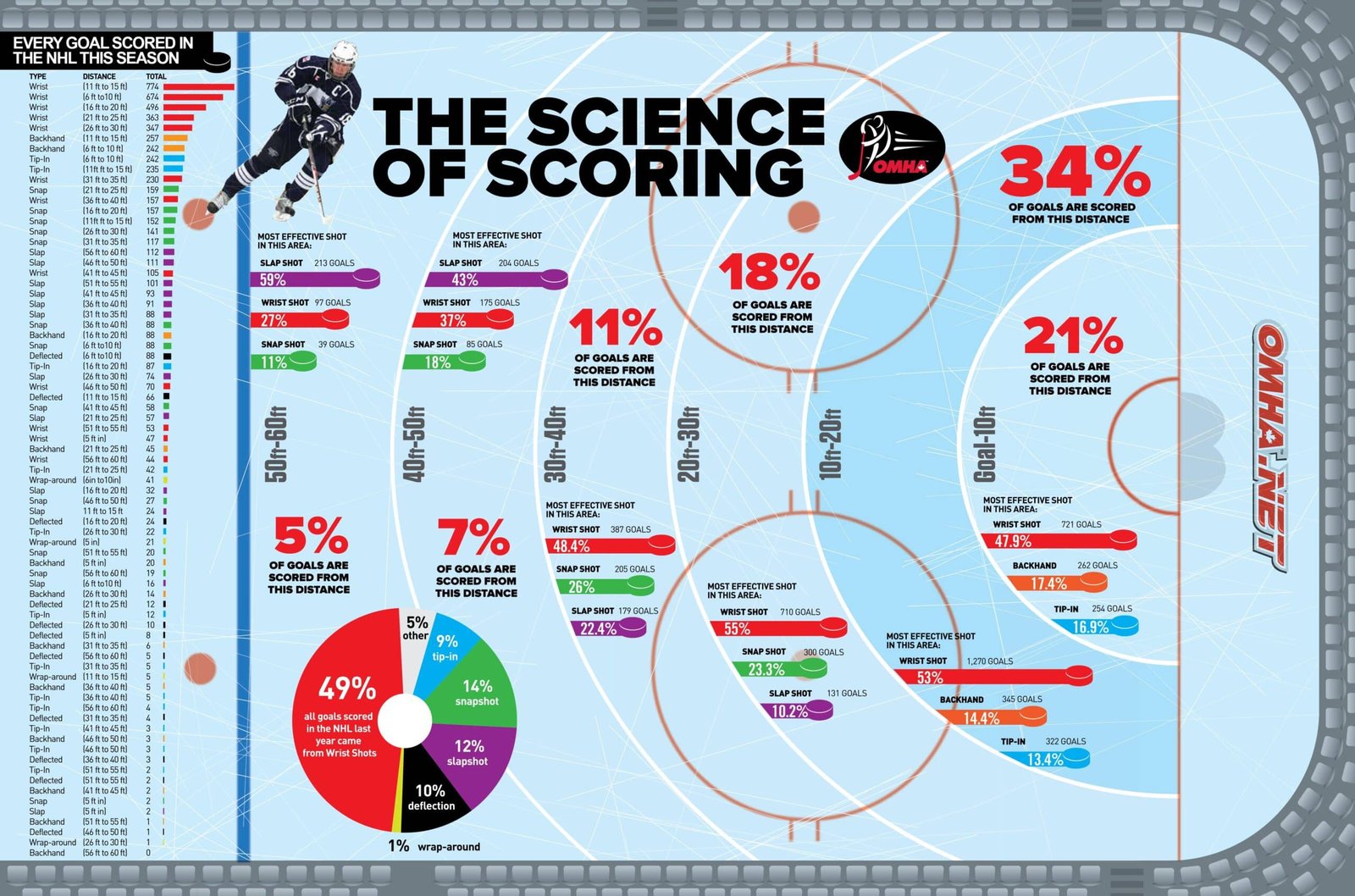Points and goals are two key metrics in hockey. They measure player performance differently.
Understanding the difference between points and goals can be confusing for new hockey fans. Goals are straightforward; they occur when a player successfully shoots the puck into the opponent’s net. Points, however, are a broader measure. They include both goals and assists.
Assists are credited to players who help set up the goal. This means a player can earn points without scoring a goal. This distinction is crucial for evaluating player contributions on the ice. Knowing these differences helps fans appreciate the skills and teamwork involved in hockey. Let’s delve deeper into how points and goals impact the game.
Basics Of Points And Goals
Hockey is a thrilling sport that involves high-speed action and precision. Understanding the difference between points and goals can help you better appreciate the game. This section will explain the basics of points and goals in hockey.
Definition Of Points
Points in hockey are a measure of a player’s overall contribution to the game. Points are calculated by adding a player’s goals and assists. Assists are when a player helps another player score a goal.
Points are crucial for evaluating a player’s performance. They help in determining the most valuable players in a game or season.
Definition Of Goals
Goals are one of the most exciting parts of hockey. A goal is scored when the puck crosses the opponent’s goal line.
Scoring goals is the primary way to win a game. Each goal adds to the team’s total score. The team with the most goals at the end of the game wins.

Credit: sleeper.com
Role Of Players In Scoring
Understanding the roles of different players is key in hockey. Each player has specific tasks that contribute to scoring. Knowing these roles helps in appreciating the game better. Let’s dive into the responsibilities of forwards and defensemen in scoring.
Forwards And Their Responsibilities
Forwards are the main scorers in hockey. They are positioned closer to the opponent’s goal. Their primary job is to create and convert scoring opportunities. Forwards are divided into three positions:
- Center: The center plays both offense and defense. They win face-offs and set up plays.
- Left Wing: Positioned on the left side, they focus on scoring and assisting.
- Right Wing: Positioned on the right side, they also aim to score and assist.
Forwards must be agile and quick. They need to have good puck-handling skills. Their goal is to outsmart the defense and score.
Defensemen Contributions
Defensemen play a crucial role in both defense and offense. They are positioned near their own goal. Their main task is to prevent the opponent from scoring. But, they also support the forwards in scoring. Defensemen are divided into two positions:
- Left Defense: Positioned on the left side, they block shots and clear the puck.
- Right Defense: Positioned on the right side, they also block shots and clear the puck.
Defensemen must be strong and strategic. They need to intercept passes and protect their goalie. They also help in transitioning the puck from defense to offense.
Both forwards and defensemen work together. Their combined efforts lead to points and goals. Understanding their roles enhances the enjoyment of watching hockey.
Scoring System In Hockey
The scoring system in hockey can seem complex to beginners. The game uses points and goals to track performance. Understanding how each works is essential.
How Points Are Earned
Players earn points through goals and assists. A goal directly scores for the team. An assist is when a player helps another player score. Each goal and assist counts as one point.
| Action | Points |
|---|---|
| Goal | 1 Point |
| Assist | 1 Point |
In a match, players aim to earn points. Teams also track players’ points over a season. This helps identify top performers.
How Goals Are Scored
A goal is scored when the puck crosses the goal line. It must pass between the goalposts and under the crossbar. The goalie tries to stop this from happening.
- The puck must cross the goal line.
- It should be between the goalposts.
- It must be under the crossbar.
Goals can come from different plays. These include slap shots, wrist shots, and deflections. Each goal counts as one point for the team.
Goals are the main objective in hockey. More goals mean a higher chance of winning. Players practice shooting to improve their goal-scoring ability.
Impact On Team Performance
The impact of points and goals on team performance in hockey is crucial. While both play significant roles, they influence the game differently. Understanding their effects can enhance your appreciation of the sport.
Team Points Accumulation
Team points reflect overall performance in the league. Teams earn points through wins and ties. A win typically grants two points. A tie might grant one point. These points determine the team’s ranking. Higher points can lead to playoff spots. Consistent performance across games is key.
Effect Of Goals On Game Outcome
Goals directly influence the outcome of individual games. Scoring goals is the main objective during matches. The team with more goals wins the game. Goals can change the game’s momentum. A single goal can boost team morale. It can also demoralize the opponent. Each goal counts toward the final score.
Historical Context
Understanding the difference between points and goals in hockey requires diving into the sport’s rich history. The way players score and accumulate points has evolved over time. This historical context is essential for grasping the full picture. Let’s explore how scoring rules have changed and some notable records that have shaped the game.
Evolution Of Scoring Rules
Early hockey had simple scoring rules. Goals were the only way to score. As the game developed, the concept of points emerged. Points include goals and assists. Assists are given to players who help score a goal. This change added more depth to player statistics.
Originally, only one assist was awarded per goal. Later, the rules changed to allow two assists. This made tracking player contributions more detailed. The modern game now values playmaking as much as scoring.
Notable Records And Achievements
Wayne Gretzky holds many scoring records. He has the most goals and assists in NHL history. His career highlights the importance of both goals and assists. Gretzky’s records may never be broken.
Another legendary player is Gordie Howe. He played in the NHL for 26 seasons. Howe’s longevity and scoring ability set many records. His balanced scoring and playmaking made him a true hockey icon.
Records and achievements in hockey show the evolution of scoring. They highlight the importance of both goals and points. This historical context helps fans appreciate the complexity of the game.

Credit: www.cheltenhamsports.org

Credit: sleeper.com
Frequently Asked Questions
What Is A Point In Hockey?
A point is earned by a player who scores a goal or assists.
What Is A Goal In Hockey?
A goal occurs when the puck crosses the opponent’s goal line.
How Do Points And Goals Differ In Hockey?
Points include goals and assists, while goals are just scoring.
How Is An Assist Defined In Hockey?
An assist is credited to players who help set up a goal.
Can A Player Earn A Point Without Scoring A Goal?
Yes, players earn points from assists too.
Do Goals Count As Points In Hockey?
Yes, each goal counts as one point.
Why Are Assists Important In Hockey?
Assists help highlight teamwork and player contributions.
Can A Player Get Both A Goal And An Assist In One Game?
Yes, players can earn multiple points in a game.
What Is The Significance Of Points In Hockey Statistics?
Points measure a player’s overall contribution to scoring.
Conclusion
Points and goals in hockey have distinct roles. Goals measure scoring success. Points tally goals and assists, reflecting overall contribution. Understanding these differences enhances your hockey knowledge. It also helps in following the game better. Both terms play crucial roles in player and team evaluation.
Knowing this can deepen your appreciation for the sport. Hockey combines skill, strategy, and teamwork. Each goal and point tells part of the story. Keep these differences in mind during your next game. Enjoy the excitement of hockey with clearer insight.




